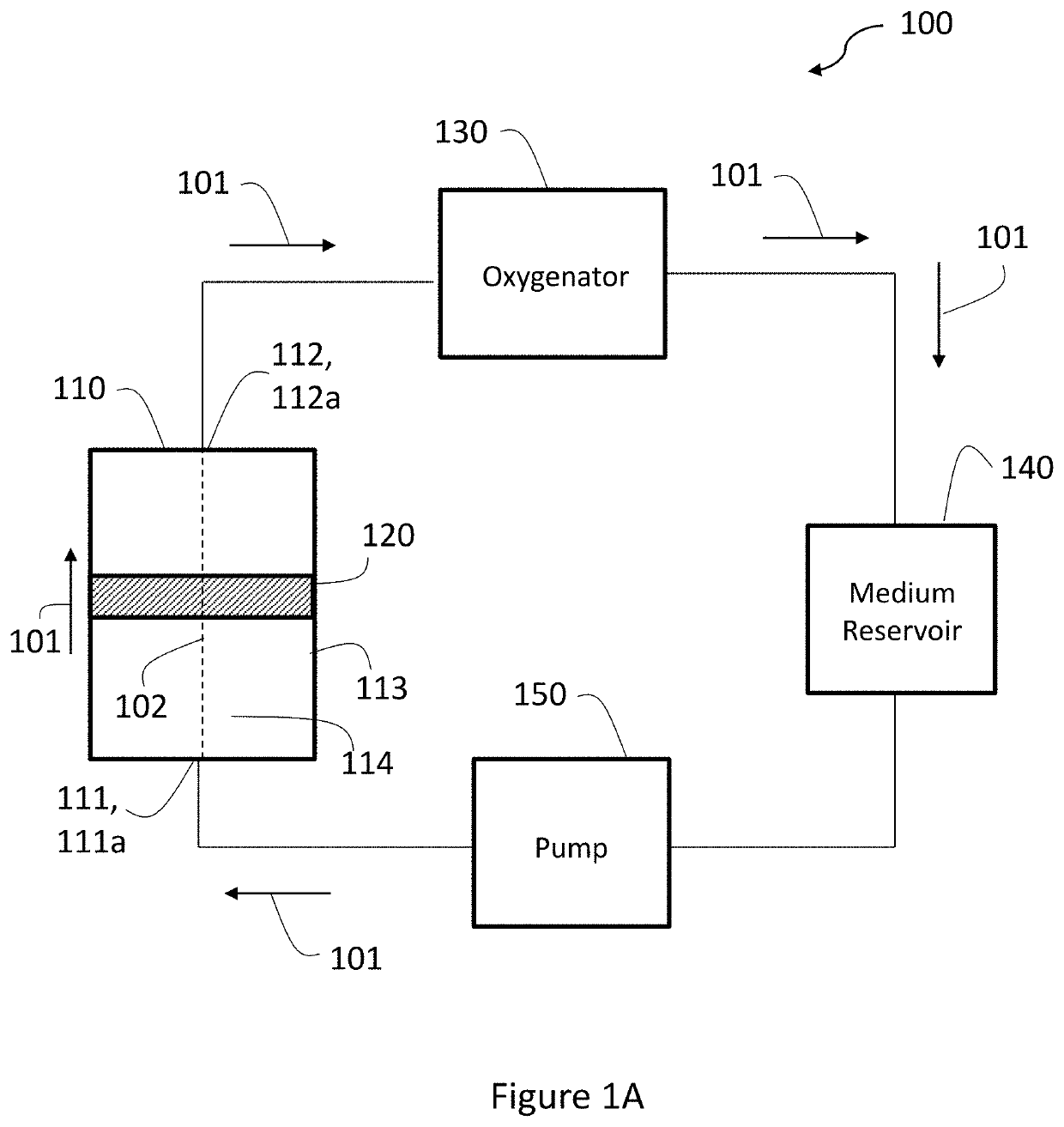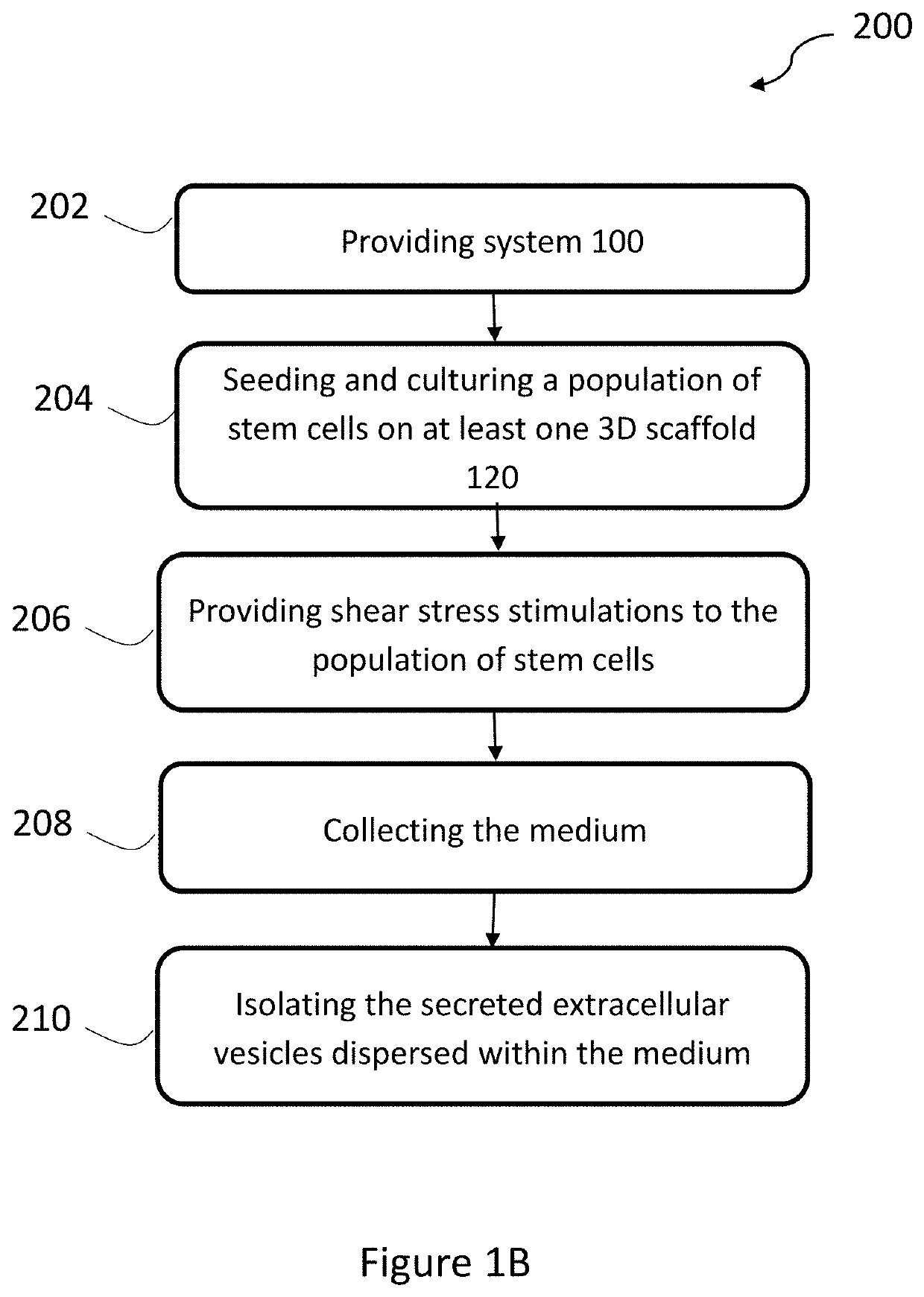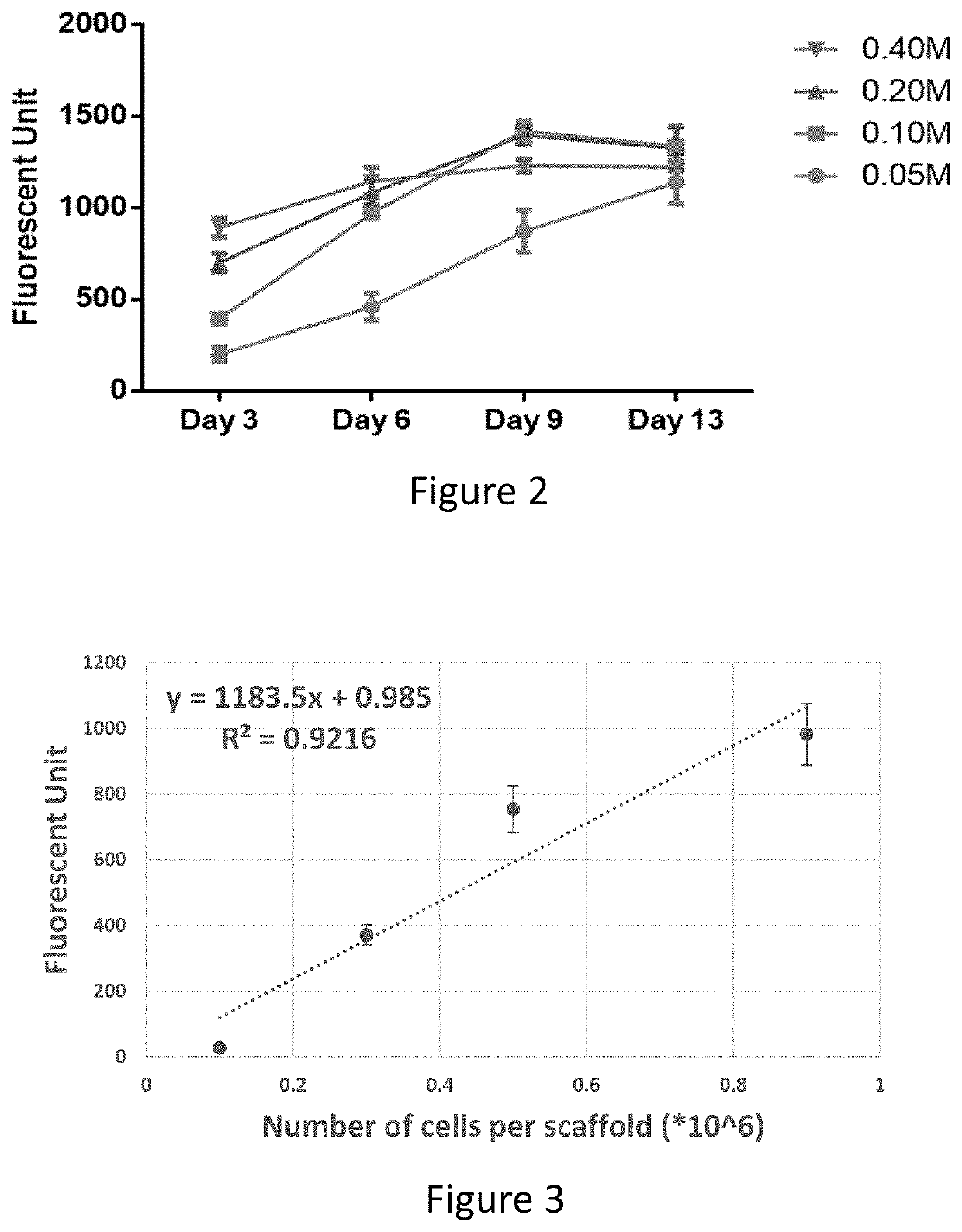Production of extracellular vesicles from stem cells
a technology of extracellular vesicles and stem cells, which is applied in the field of enhanced secretion of extracellular vesicles from stem cells, can solve the problems of limited exosome production yield, and achieve the effect of improving the biological effect of evs and enhanced secretion of evs
- Summary
- Abstract
- Description
- Claims
- Application Information
AI Technical Summary
Benefits of technology
Problems solved by technology
Method used
Image
Examples
example 1-3d
Cell Seeding and Proliferation
[0179]The following stem cells were used in the examples: Human dental pulp stem cells (DPSCs), passages 7-9 (Lonza, Cat: PT-5025) and adipose-derived mesenchymal stem cells (Lonza). Additionally, primary neurons from dorsal root ganglia (DRG) from adult female Sprague-dawley rats (200-220 gram) were isolated and plated on laminin-coated plates, as described previously (Guo, S., et al., Intranasal Delivery of Mesenchymal Stem Cell Derived Exosomes Loaded with Phosphatase and Tensin Homolog siRNA Repairs Complete Spinal Cord Injury. ACS Nano 2019, 13, 10015-10028).
[0180]For culturing DPSCs in a 3D environment, Fibra-Cel scaffolds (Eppendorf), composed of 50% polyester fibers (15 μm diameter) and 50% polypropylene were used.
[0181]For testing the effect of extracellular vesicles (EVs) on vasculature, porous sponges composed of 50% PLLA (Polysciences) and 50% PLGA (Boehringer Ingelheim) were fabricated utilizing a salt-leaching technique to achieve pore siz...
example 2
er Quantification and Flow Rates Experiment Protocol
[0184]3D DPSC-seeded scaffolds with optimized seeding density and multi-layered expansion and incubation period (9-day static cultivation) were randomly assigned and assembled to a bioreactor system (B. Zohar, Y. Blinder, D. J. Mooney, and S. Levenberg, “Flow-Induced Vascular Network Formation and Maturation in Three-Dimensional Engineered Tissue,” ACS Biomater. Sci. Eng., vol. 4, no. 4, pp. 1265-1271, April 2018) with an exosome-depleted medium. The exosome-depleted medium contained: low-glucose Dulbecco's Modified Eagle Medium (Biological Industries), supplemented with 10% exosome-depleted fetal bovine serum (Hyclone) which previously went through ultracentrifugation to remove exosome content from the serum; 1% Glutamax (Gibco); 1% Penicillin-streptomycin-nystatin (Biological Industries); and 1% non-essential amino acid (Gibco). The bioreactor was connected with a peristaltic pump (both of EBERS Medical Technology SL) and a mediu...
example 3
Morphology and Viability
[0190]The impact of flow on cell viability, morphology and location on the scaffold was assessed utilizing s100β, the cytoplasmic marker for DPSCs, and visualization of live / dead assay cells under a confocal microscope. Live / Dead assay was conducted utilizing a calcein-AM (1 μmol / L) / ethidium-homodimer-1 (4 μmol / L) viability assay (Sigma-Aldrich). Immunofluorescence of the cytosol of the DPSCs was achieved with anti-s100β antibody (1:200, Sigma, Cat: S2532). DRG neurons were stained with anti-βIII-tubulin (Promega).
[0191]The viability of DPSCs cultured under 3D static control or different flow rates is illustrated at FIGS. 5A-5D. Calcein-AM / Ethidium assay showed live cells (FIGS. 5A and 5C) and dead cells (FIGS. 5B and 5D). It can be seen that the majority (more than about 95%, utilizing a visual assessment) of DPSCs in 3D culture conditions remained viable.
[0192]The morphology of DPSCs cultured under 3D static control or different flow rates was also tested. ...
PUM
| Property | Measurement | Unit |
|---|---|---|
| shear stress | aaaaa | aaaaa |
| shear stress | aaaaa | aaaaa |
| flow velocity | aaaaa | aaaaa |
Abstract
Description
Claims
Application Information
 Login to View More
Login to View More - R&D
- Intellectual Property
- Life Sciences
- Materials
- Tech Scout
- Unparalleled Data Quality
- Higher Quality Content
- 60% Fewer Hallucinations
Browse by: Latest US Patents, China's latest patents, Technical Efficacy Thesaurus, Application Domain, Technology Topic, Popular Technical Reports.
© 2025 PatSnap. All rights reserved.Legal|Privacy policy|Modern Slavery Act Transparency Statement|Sitemap|About US| Contact US: help@patsnap.com



